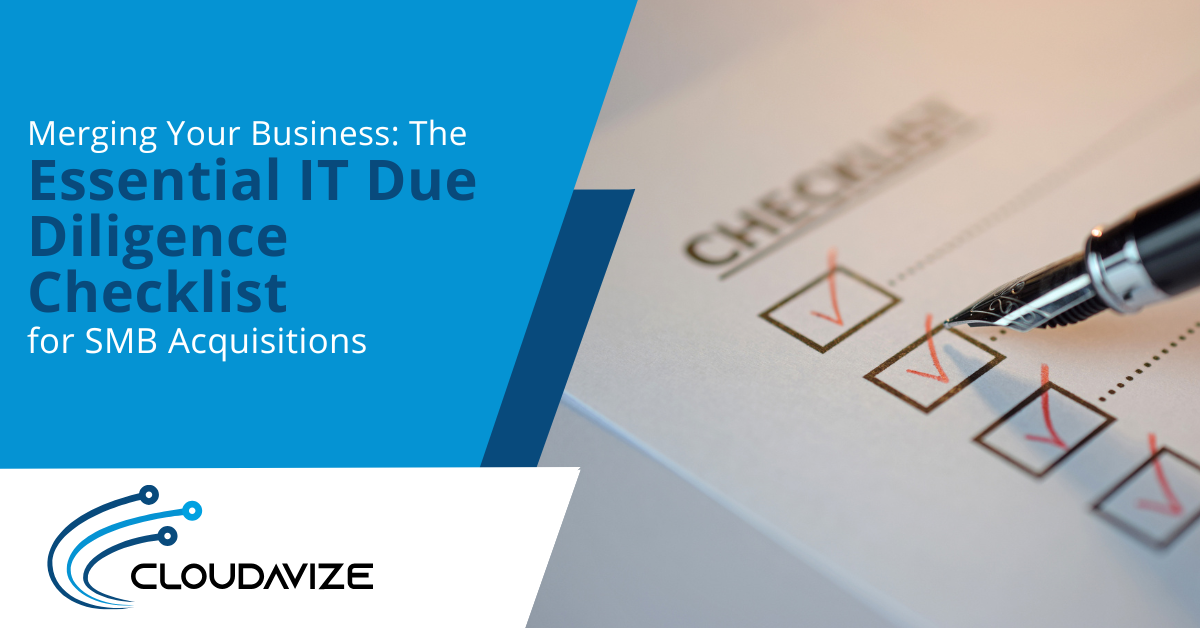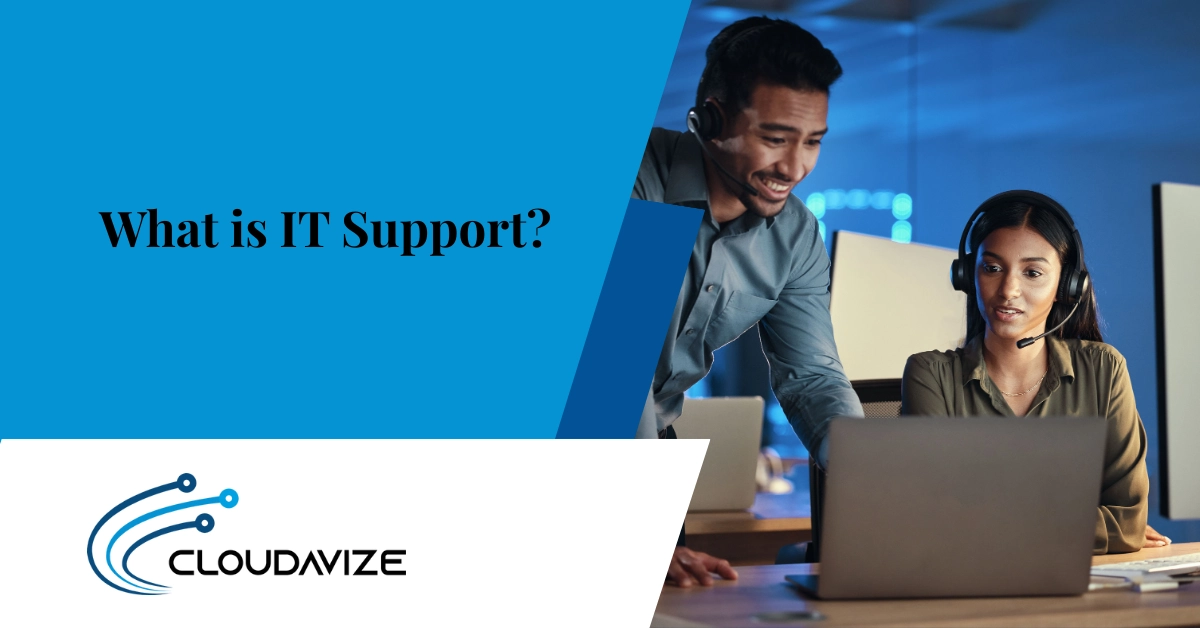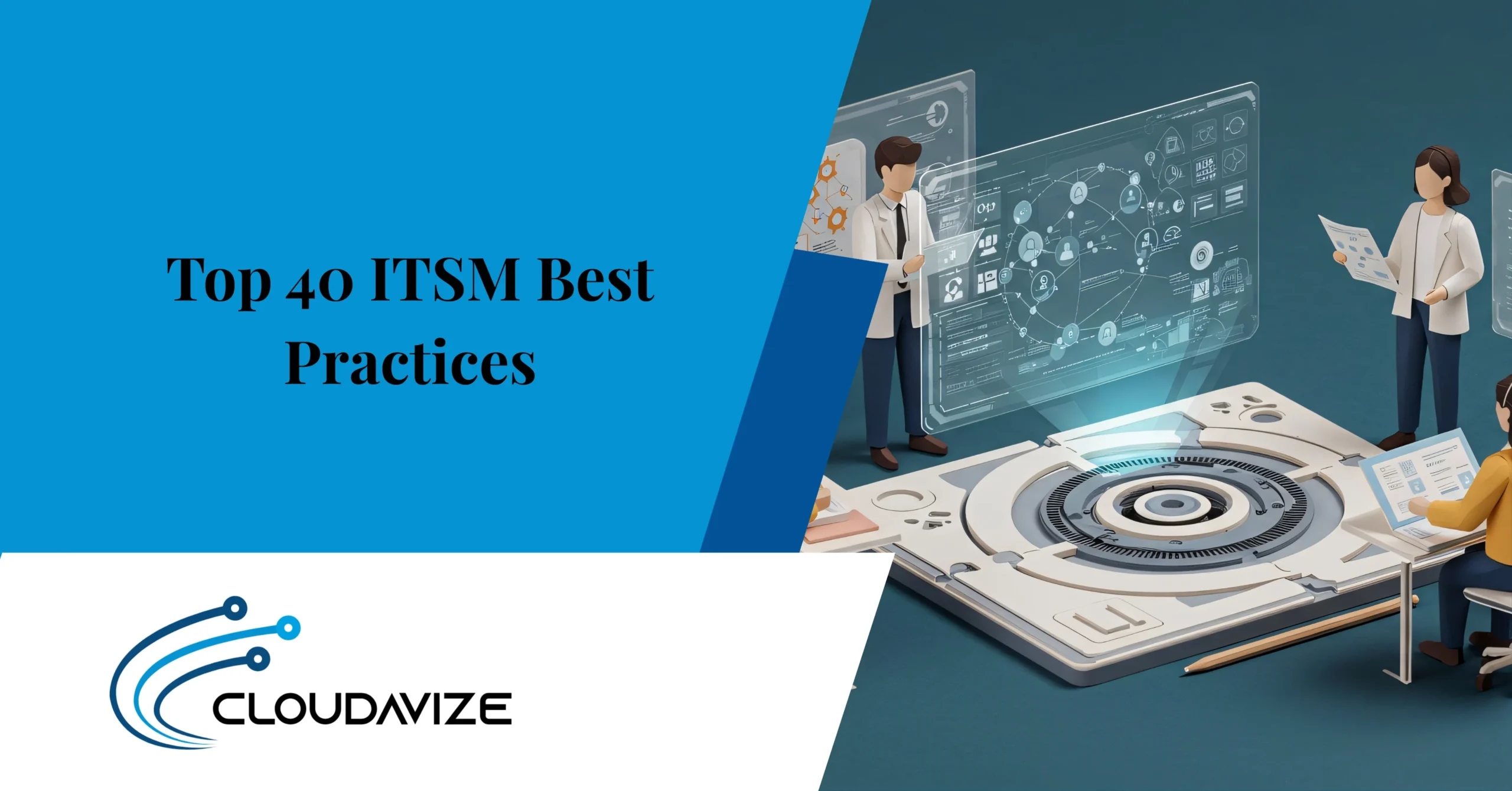Mergers and acquisitions (M&A) are complex, especially for small to medium-sized businesses (SMBs). Acquisitions can disrupt operations and stretch internal resources. One of the biggest risks is technology mismatches that derail transitions. While most mergers and acquisitions thoroughly review operational, financial, and legal issues, IT is often overlooked.
In today’s digital age, IT systems are the lifeblood of business. They are no longer just support tools but critical drivers of day-to-day operations. Whether it’s cybersecurity, licensing compliance, or infrastructure compatibility, overlooking IT can result in costly delays. Cloudavize can help ease these challenges and make your SMB acquisition smoother.
Table of Contents
Why Due Diligence Matters
IT environments are unique to the setting in which they operate, this is particularly true for SMBs. Networks are often built organically over time with little documentation or standardization.
With this in mind, many companies inherit:
- Legacy systems with no vendor support
- Poorly secured networks
- Non-compliant software licenses
- Vulnerabilities that expose the business to cyber threats
When acquiring SMBs, it’s important to assess the IT assets to determine if they can be integrated and modernized. Doing so helps identify costs and creates a transition plan that ensures business continuity.
The IT Due Diligence Checklist for SMB Acquisitions
The checklist is designed to help executives and IT professionals fully evaluate the target’s technology setting.
- Infrastructure Assessment
- Software & Application Audit
- Cybersecurity
- Data Management Evaluation
- IT Structure and Staffing
- Contracts, Vendors, and Licensing
- Integration Readiness
Infrastructure Assessment
An infrastructure assessment maps technologies and their interdependencies with crucial systems, showing how they support business operations.
Key steps include:
- Taking an inventory of all hardware assets (servers, network equipment, laptops, desktops, and mobile devices).
- Documenting the age of infrastructure components and any remaining warranties.
- Assessing bandwidth capacity and connectivity options.
- Determining which assets are cloud-based versus on-premises.
- Reviewing storage architecture.
- Locating the BCDR (Business Continuity and Disaster Recovery) plan and evaluating redundancy and failover systems.
Software & Application Audit
This review evaluates compatibility and licensing to determine how easy or difficult it would be to continue supporting the environment.
- Build a list of critical applications, software versions, and support availability.
- Document end-of-life dates.
- Note whether licenses are site-based or device-based, as this affects costs.
- Map core business functions and their dependencies.
- Evaluate custom-developed software and ensure documentation is available.
Unsupported software and hidden licensing costs can create significant challenges during an acquisition.
Cybersecurity
The level and effectiveness of cybersecurity are critical to determining costs for upgrades and identifying threat risk.
- Evaluate existing cybersecurity policies and procedures.
- Perform security assessments of firewalls, patch management, and antivirus settings.
- Assess vulnerabilities and document testing protocols.
- Review response plans and any breach history.
- Assess access control effectiveness.
- Confirm compliance with HIPAA, PCI-DSS, GDPR, and CCPA.
Data Management Evaluation
It is vital that data governance and compliance be a high priority since data is used to guide policy development and business decisions. This important commodity needs to be managed properly and securely to make the transition as seamless as possible.
- Classify available data and review retention policies.
- Review how sensitive data is handled.
- Evaluate backup routines and test recovery frequency.
- Confirm compliance with local, state, and industry regulations.
- Review data-sharing agreements and third-party processors.
It is essential to identify any compliance violations, as this can affect cost and resource allocation.
IT Structure & Staffing
An acquisition isn’t just about digital assets, it’s about people.
- Build an organizational chart of IT staff and roles.
- Identify key-person dependencies.
- Review staff certifications and accreditations.
- Document outsourced services and related costs.
This evaluation highlights whether personnel and resources are prepared to transition effectively.
Vendor Contract and Licensing
Contractual obligations can complicate transitions and increase costs.
- Review all IT-related contracts for renewal dates and termination clauses.
- Identify long-term commitments that may create hidden costs.
- Map out vendor dependencies that affect migration.
Cloudavize can guide you through this process to avoid oversights and unexpected expenses.
Integration Readiness
Determining the difficulty in integrating an SMB’s IT infrastructure is crucial to assessing the overall cost and ability to make the transition as seamless as possible.
- Assess compatibility with the existing IT environment.
- Review directory services and identity management.
- Plan email and collaboration platform integration.
- Evaluate how security tools and monitoring systems will align.
- Evaluate the documentation processes of the previous IT staff.
IT Due Diligence Execution
There are several keys to properly executing due diligence when assessing existing IT environments. The most important:
- The process should begin during the initial phases of evaluation.
- Bring in outside resources to perform assessments.
- Effective documentation is key to maintaining due diligence and identifying red flags.
Successful Integration
Technology can make or break post-merger success. When risks are identified early, contingency plans can be created, ensuring a strong foundation for innovation and long-term growth.
If your organization is preparing for an acquisition, don’t leave IT to chance. Cloudavize brings the technical expertise and guidance needed to make your transition smooth, cost-effective, and secure.
Contact Cloudavize today for a no-obligation consultation and let us guide you through a successful integration.



